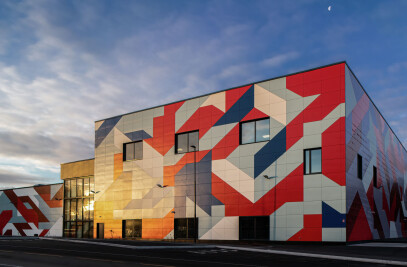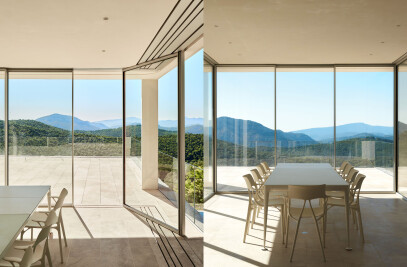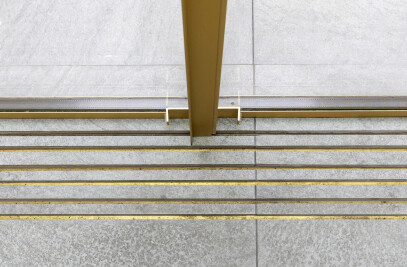In defiance of conventional educational buildings known for their long hallways and imposed silence, the new Brighton College School of Science and Sport by OMA in collaboration with Ellen van Loon presents an ambitious mix of program and modern architectural language.

With a total budget of 55 million GBP, the college differentiates itself from the Victorian architecture that surrounds with a stepping exterior comprising glass and dark grey, glass-reinforced concrete.
Meanwhile, the interior program places in adjacency what might otherwise be considered the incongruous uses of science laboratories and classrooms over sports courts, gyms, and pools. The levels are then manipulated so that the uses are seen and experienced from one level to the other. Corridors and stairs are generous in scale and form part of the school, acting as social spaces rather than as mere functional connectors. Further to this, a high level of façade transparency affords views out towards playing fields.


The roof is particularly interesting from a program perspective, accommodating a running track and areas of artificial turf, alongside inaccessible areas planted with sedum.

Interior details include cupboards in the laboratories that are made of glass, allowing the chemical smoke of a science experiment, for example, to become visible.
Headmaster Richard Cairns says of the building’s interdisciplinary nature: “My concern as an educator has always been the silo mentality of academic institutions so that subject specialists in one area don’t talk to those in another. My challenge to Ellen was to create a building where different academic disciplines were interwoven into the same building. I really wanted to be able to stand on the sports field outside and see a beehive of different activities going on, wonderfully interconnected and alive. This Ellen delivered in spades.”
Ellen van Loon adds, “We wanted to give Brighton College a building that continues to deliver more than strictly required, expanding the traditional definition of educational architecture. Generous spaces outside of classrooms become the pupils’ domain for self-directed activity and collaboration.”
The result is a building of multiple energies.
































